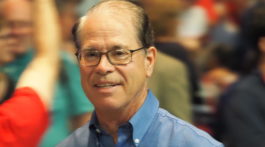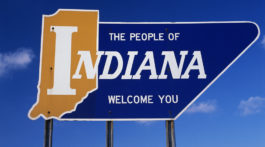By Scott L. Barnhart
There is little doubt Americans are living in an age of countless choices. According to the National Center for Education Statistics, there are approximately 100,000 public schools, 30,000 private schools and over 3,000 four-year colleges from which to choose.
In our free time, we wade through hundreds of television channels and seemingly countless options on services like Netflix and Hulu. Yet, when millions of American voters go to the ballot box next month, they will have essentially two political parties to choose from: Republicans or Democrats.
So, how exactly did we end up with a two-party political system?
As with other aspects of our government, the answer can be traced in part to England, specifically to the establishment of the Whigs and Tories in the 1600s. Around that time, the British monarchy faced the Exclusion Crisis.
The Exclusion Bill sought to prohibit the King’s brother as the heir to the throne because he was Catholic. At that time, Whigs were political activists in favor of the bill while Tories were loyalists who supported the monarchy. Whigs generally believed that the political power ultimately rested in the people while Tories favored a system based on heredity.
The debate between the Whigs and the Tories spilled over into Colonial America. As Colonial America developed, the founders forged their own factions and took positions on issues to debate. One of the colonial ideological debates was divided among two camps: classical republicans and natural rights philosophers.
Classical republicans placed the needs of the larger community ahead of an individual’s liberty. That is, classical republicanism focused on the common good of society.
Natural rights philosophers, however, emphasized the importance of individual rights and limited government. Through debate and negotiation, concepts of both classical republicanism and natural rights are found in our U.S. Constitution and the Bill of Rights.
However, this drift toward two political camps was contrary to the advice of at least two founders.
John Adams wrote in 1780, “[t]here is nothing which I dread so much as a division of the republic into two great parties, each arranged under its leader, and concerting measures in opposition to each other.” He continued that a two-party system “in my humble apprehension, is to be dreaded as the greatest political evil under our Constitution.”
Similarly, George Washington stated in his farewell presidential speech, “[t]he alternate domination of one faction over another, sharpened by the spirit of revenge, natural to party dissension, which in different ages and countries has perpetrated the most horrid enormities, is itself a frightful despotism.”
Despite Adams and Washington’s serious concerns that such a system could potentially be counterproductive and harmful, America has persisted in allowing a two-party system to control our government.
A structure of U.S. elections – single-member districts – also steers us toward a binary choice.
Only one person and one party will represent any one voting district however big or small. Many nations with parliamentary systems of representation have proportional representation, which rewards votes cast for each party not just those that “win.” It is, however, impossible in the U.S., because that requires multi-member districts.
Our country has a systematic preference for two parties.
Let’s say there is a voting district in which exactly 100 people vote. The Blue Party gets 33 votes; the Red Party gets 33 votes; and the Yellow Party gets 34 votes. Who wins? The Yellow Party candidate because in a single-member district, there is no prize for second place.
The fact that two-thirds of the district voted for someone else matters not. Eventually, the Red and Blue parties would be wise to form a new Purple Party featuring a coalition of voters with a better chance at winning. Now, we’re back to two parties.
In a proportional system, that hypothetical creates a much different result. The Red and Blue Parties each get 33 percent of the legislative seats, respectively. The Yellow Party would only slightly outnumber them, with 34 percent, but could never outvote both if they voted as a bloc. This is why proportional systems feature more parties, because it rewards voting and participation rather than winning.
While how we ended up with a two-party system might be the easier question, whether it is an appropriate long-term strategy or what potential alternatives exist are likely more difficult and arguably more pressing questions.
Scott L. Barnhart is an Indianapolis attorney and board member of the Indiana Bar Foundation.
A Democracy’s Primer is a collaboration between the journalism and legal communities to aid the public’s understanding of how government works with citizen engagement. Volunteers for the Indiana Bar Foundation (Bar Foundation) will write the articles for distribution by the Hoosier State Press Association Foundation.














